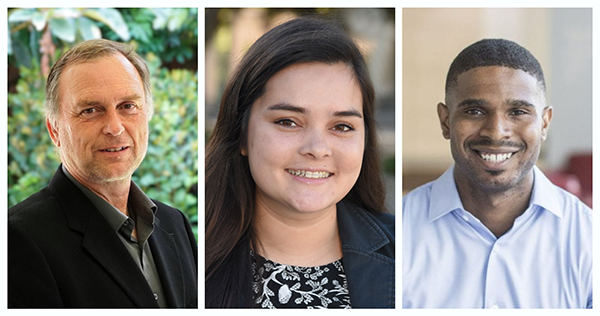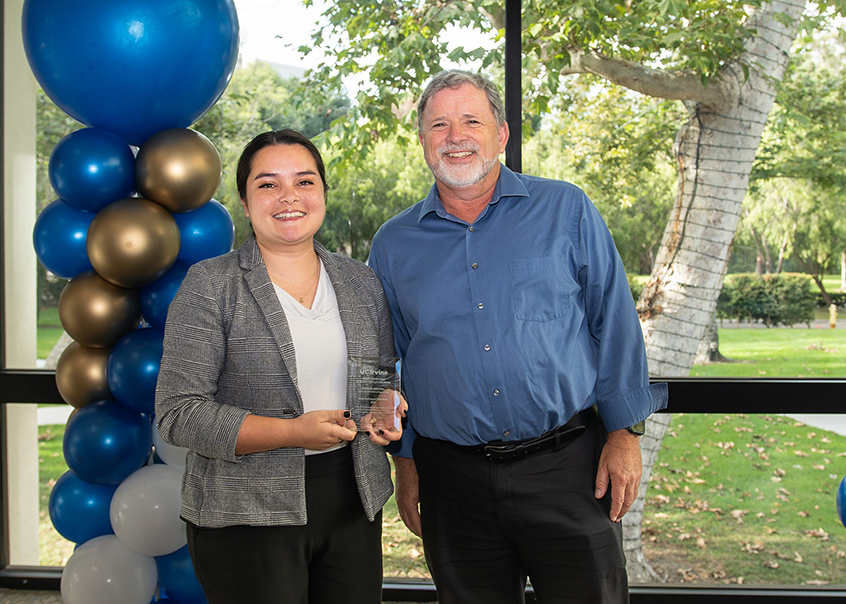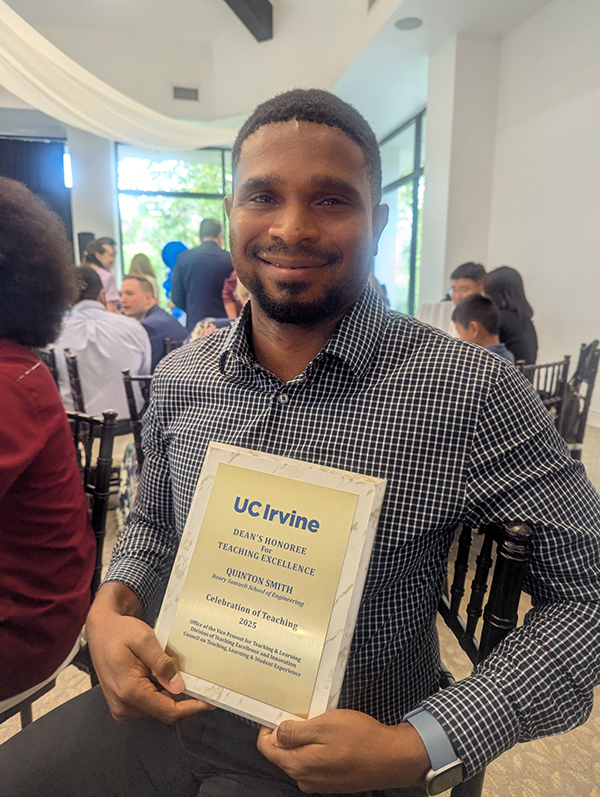Celebration of Teaching Honors Three Samueli School Engineers

Oct. 8, 2025 - Samueli School of Engineering faculty and a graduate student were recognized for their excellence in teaching at UCI Teach Day/ Celebration of Teaching held by the Division of Teaching Excellence and Innovation (DTEI).
Biomedical engineering Associate Professor Jim Brody won an Excellence in Digital Learning award for his ability to measure and improve student success in his online course, titled “Engineering Innovations in the Treatment of Diabetes,” which attracts an average of 6,000 undergraduate students per year. Brody used to measure student progress by testing students once at the start of the quarter and again at the end. He shifted his focus after realizing that student success can mean more than academic excellence, but rich in experience.
Brody uses digital tools like the learning management system in Canvas, video viewership analytics from cloud-based digital provider Yuja and social reading engagement from online learning platform Perusall. He experimented with teaching formats and found that students clicked out of a long reading assignment after a few pages, but stayed to watch a 30-minute, narrative video.
“Digital learning tools have been instrumental, not just as delivery mechanisms, but as instruments for understanding and responding to student interaction in ways previously impossible, allowing me to conduct research on my own teaching in real time,” said Brody, who has taught at UCI for nearly 25 years. “I can strive to create learning journeys that are not only informative but also truly memorable and, by that measure, successful for a more diverse range of students.”
Esther Hessong was selected as one of four UCI Most Promising Future Faculty. She was recognized as a graduate student who shows great promise through her effectiveness as an instructor or teaching assistant, her research and service to the department, university, profession and community.

At UCI, Hessong served as a lab teaching assistant, where she developed exercises to improve scientific writing for lab reports, prepared discussion materials and held additional office hours for students in crisis or needing support. Before she started graduate school, Hessong earned her California Single Subject teaching credential through UC Berkeley’s CalTeach program and taught 10th grade chemistry in Oakland, California. She translated these skills to write syllabi, design courses and create materials for a university level. Hessong credits her faculty adviser, Professor Tim Rupert, for being incredibly encouraging and supportive.
Hessong secured two academic years’ worth of funding for her dissertation to work at Los Alamos National Laboratory (LANL) through the UCI-LANL SoCal Hub Fellowship and at Sandia National Labs through the Department of Energy Office of Science Graduate Student Research Program Award. At the national labs, she does mechanical testing of copper alloys conducted at different speeds to measure their response. She has also worked on a collaborative project to characterize tin’s microstructure which is now published in Acta Materialia.
“While research is important to me, I think that I may have been selected for my service to UCI and my local communities, where I always find ways and time to support others regardless of re-applying to Ph.D. programs, switching fields and working in a new state,” Hessong said.

Quinton Smith, assistant professor in chemical and biomolecular engineering, was recognized as one of 14 Deans’ Honorees. Smith teaches two undergraduate courses with up to 80 students each and one graduate course that focuses on the applications of stem cells in tissue engineering.
Per his nomination letter submitted by Engineering Dean Magnus Egerstedt and the Associate Dean of Student Affairs Nancy Da Silva, Smith integrates innovative teaching methods into his core undergraduate courses. His emphasis on real-world applications allows students to bridge the gap between theoretical concepts and their real-world implications.
Smith’s stem cell research lab combines biology and engineering to engineer components of a cell's environment to control how they mature into various tissues. Smith teaches students that they must employ various approaches, including the creation of user-defined scaffolds or biomaterials, micro physiological systems, and organ-on-chip devices, and utilize tools such as 3D bioprinting.
Alongside his teaching workload, Smith dedicates time to mentor undergraduate students in research. Many of the undergraduate students that he has mentored have pursued master's degrees and doctorates at various institutions, including UC Berkeley, USC, NYU, Johns Hopkins, the University of Delaware and UCI.
“I am incredibly impressed with the student's ability to balance both the demanding coursework in the chemical engineering discipline and other life commitments,” Smith said. “Teaching and mentoring are among the most meaningful aspects of my role as an assistant professor, and I am grateful to have the opportunity to guide and learn alongside talented and dedicated students. This recognition affirms my commitment to fostering curiosity, rigor and growth in the classroom and laboratory, and it inspires me to continue to build an environment where future engineers can thrive.”
– Cassandra Nava
